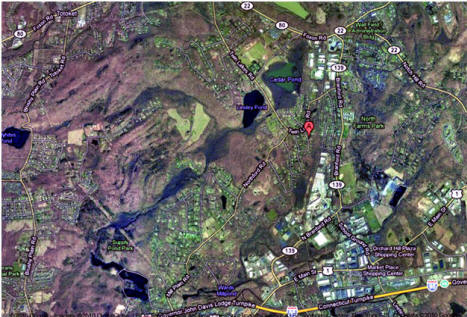Alewives are a species of herring. They range throughout the Atlantic seaboard, from Nova Scotia to Florida. There are both landlocked types and anadromous (sea-run) types that spend the majority of their life at sea but return to freshwater to spawn, much like salmon do, I suppose. The term "river herring" is used to refer to both types, the anadromous alewives and the blueback herring and sawbelly. Adult alewives enter rivers from early May to early June and swim upstream into lakes and ponds to spawn. Each female produces 60,000-100,000 eggs. The spent adults make their way downstream shortly after spawning. It is estimated that 25% are repeat spawners. The seaward migration of the young occurs from mid-July through early November.
Incidentally, the name alewife is said to come from the comparison of the fish front body, which is deep and larger than other fish, with a corpulent female tavern keeper ("ale-wife"). The articles I read said everything eats alewives, from eagles, gulls and other sea birds to raccoons, skunks, and otters to bass, bluefish, trout, salmon, pike, perch and turtles. (Human consumption mainly is in the smoked form.) Alewives are important to the ecology of freshwater, estuarine, and marine environments and tie our ocean, rivers and lakes together, providing vital nutrients and forage needed to make healthy watersheds. They are listed by the U.S. National Marine Fisheries Service as a Species of Concern (but are not on the Endangered Species List). Massachusetts, Rhode Island, Connecticut, and North Carolina have instituted moratoriums on taking and possession.
OK, now I know all about alewives, but can only guess how they are going to make it into land-locked Cedar Lake. I've long heard tales from neighborhood old-timers of an underground system of streams and springs that connect Cedar and Lindsey Lakes. Perhaps it extends to the Branford Supply Pond also. A quick look at Google maps, however, painted a much easier route. All three water bodies are clearly connected by an above-ground stream! I figure that if just one female makes it to Cedar Lake and lays those 100,000 eggs--well, that's a lot of fish If 10% of that 200,000 make it -- better be on the lookout for alewives.


P.O. Box 1005
North Branford, CT 06471
